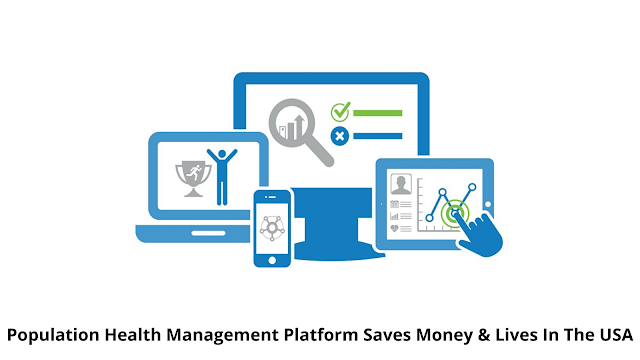Population Health Management Platform Saves Money & Lives In The USA
The concept of Population Health Management (PHM) has gained traction among US healthcare professionals and policymakers in recent years. Many decision-makers believe that developing and sustaining multi-stakeholder collaboration, community engagement, and non-clinical initiatives, can save money while simultaneously saving lives.
What is Population Health Management (PHM)?
A
Population Health Management Platform involves the process of collecting
and analyzing medical data to identify and classify individuals into a group,
to monitor and optimize patient care of that group. The objective is to enhance
treatment outcomes for a group of patients and the provider's financial
outcomes.
Closing
care gaps, creating interventions, incentive programs, and taking other
measures to improve individual health is part of PHM. The Population Health
Management Platform brings optimal benefit to value-based care by
transforming aggregated data to present a holistic patient image.
The
patient portfolio helps healthcare providers, care managers, and physicians to
address and detect treatment gaps in the patient population, allowing a
healthcare organization to save money while improving patient outcomes.
The Role of Population Health Management in the United States
Although
the United States spends far more on healthcare than other countries, its
population health results are still not satisfying. Authorities have
recommended keeping the primary focus on disease prevention.
North
America is likely to lead the global population health management market due to
the rising prevalence of chronic diseases, particularly among the elderly.
Other variables that will contribute to domination will include supporting
government policies and initiatives, and the presence of a well-established
healthcare system.
In
addition to traditional prevention concepts such as vaccines and early
screening, Population Health Management concentrates on Social Determinants of
Health (SDoH), supporting healthy lifestyles and chronic condition management.
An effective PHM is presumed to result in a healthier population, reduced
healthcare expenditure, and cost savings.
The
Centers for Medicare & Medicaid Services (CMS) has defined PHM’s clinical
perspective as a collection of activities within the healthcare delivery
system. The CMS also outlined PHM as a holistic approach that focuses on social
services, such as guaranteeing appropriate shelter and food. Interventions that
are targeted at certain vulnerable populations tend to have a more significant
impact on health.
The
health industry is working on diverse approaches to achieve care outcomes.
According to a study of healthcare managers and physicians, significant
clinical practice improvements to achieve population health include investing
in behavioral health, using interdisciplinary teams, and building community
connections.
Based
on the assumption that PHM is a solution for managing growing healthcare costs,
the connection between social determinant spending and cost reductions is
uncertain.
Nevertheless,
payers are switching towards quality-based contracting by acquiring providers
and utilizing Population Health Management Solutions to assess potential
cost savings throughout healthcare systems.


.png)
Comments
Post a Comment
Please do not enter any spam link in the comment box